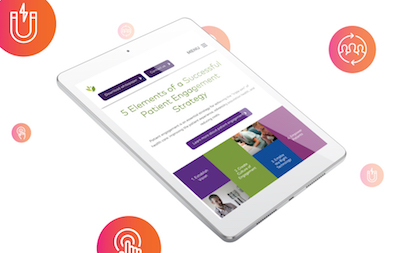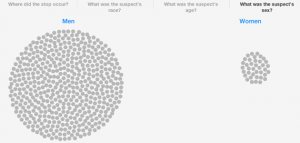To gate or not to gate?
It’s a question that every content marketing team has had to answer at least once—if not hundreds—of times. In a planning meeting for a new content piece, it’s often the first question that comes up: how are we driving traffic to this content? And how are we capturing that traffic?
It might seem as easy as placing a form on the page, but gating, unfortunately, comes with some complexities—and most certainly a list of pros and cons.
With an estimated 80% of B2B content behind a gate, it’s clear that forms are everywhere—but are they working? And if they aren’t, how can you ensure that they will—or when do you decide to forego them altogether?
Let’s break down the why, how, and when of using gated content, with a few tips from our content experts that will help you find success.
Why Use Gated Content?
The “why” here is fairly simple. Gating equals gaining information that you cannot gain without a gate in place. When a person downloads your eBook, for example, you have no way of knowing why the person downloaded it, what company they work for, or even their email address. The file is presumably saved to their desktop—but why?
By placing a gate in front of your content, or locking certain chapters to something like an eBook or white paper, you gain valuable information about your buyer or prospect that can be surfaced to sales. Because content costs money to create, you must look at the personal information gained from form completions as your currency, since most often, content on your website is free to download.
How to Use Gated Content
Think of the last time you downloaded an asset or resource. What information did you have to provide to receive it?
If you were presented with a long form with many questions, you were probably more likely to have abandoned it, forgoing the content altogether.
This is a risk of gating content, and something to be highly aware of when planning when and where to place your gate.
Take into account the type of content you’re creating. Is it an eBook? A white paper? Demand Gen Report states that 63% of buyers are willing to provide information about themselves in exchange for an eBook, with 76% indicating the same for a white paper.
The content you’re creating must be extremely valuable to your target audience in order for them to provide you with the valuable information that you’re looking for, so you’ll need to start by determining exactly who that audience is, where they’re coming from, and what they are hoping to gain from your content, whether it’s education or information about your product or service.
Once you determine your audience, it becomes much easier to determine which pieces might compel them to complete a form. If you are marketing to a technology audience, for example, you might consider gating a lengthy research report on industry trends.
When and Where to Use Gated Content
In the case of Rock Content, we’ve found that A/B testing is especially helpful when you’re getting started with gating your content. By testing out different headlines and descriptions on your content’s landing page, you can determine which messaging was more compelling to your audience, leading to more form completions and downloads.
In our latest webinar on eBooks and white papers, our content strategy expert Stephanie Mansueto noted that A/B testing can include making changes to the form itself. By testing the questions you ask, the fields you include, and even the imagery that surrounds the form, you’ll be able to gain a much better understanding of what’s inspiring your conversions.
Need Help Gating Your Content?
Watch our webinar to learn more about best practices for creating effective eBooks and white papers, including more tips and tricks from Stephanie on gating your content.
Going to Content Marketing World this year? Stop by our booth, or schedule a meeting with us in advance and we can chat about your content needs.







